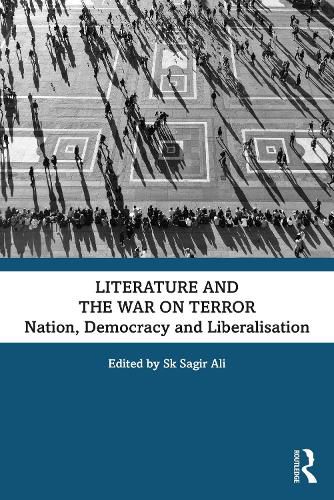Readings Newsletter
Become a Readings Member to make your shopping experience even easier.
Sign in or sign up for free!
You’re not far away from qualifying for FREE standard shipping within Australia
You’ve qualified for FREE standard shipping within Australia
The cart is loading…






This book examines cultural imaginations post 9/11. It explores the idea of a religious community and its multifaceted representations in literature and popular culture. The essays in the volume focus on the role of literature, film, music, television shows and other cultural forms in opening up spaces for complex reflections on identities and cultures, and how they enable us to rethink the ‘trauma of familiarity’, post-traumatic heterotopias, religious extremism, and the idea of the ‘neighbor’ in post-9/11 literary and cultural imagination. The volume also probes the intersections of religion, popular media, televised simulacrum, digital martyrdom in the wake of 9/11. It also probes the simulation of new age media images with reference to the creation and dissemination of ‘martyrs’, the languages of grief, religionization of terrorism, islamophobia, religious stereotypes, and the reading of comics in writing the terror.
An essential read, the book reclaims and reinterprets the alternative to a Eurocentric/Americentric understanding of cultural and geopolitical structures of global designs. It will be of great interest to researchers of literature and culture studies, media studies, politics, film studies, and South Asian studies.
$9.00 standard shipping within Australia
FREE standard shipping within Australia for orders over $100.00
Express & International shipping calculated at checkout
This book examines cultural imaginations post 9/11. It explores the idea of a religious community and its multifaceted representations in literature and popular culture. The essays in the volume focus on the role of literature, film, music, television shows and other cultural forms in opening up spaces for complex reflections on identities and cultures, and how they enable us to rethink the ‘trauma of familiarity’, post-traumatic heterotopias, religious extremism, and the idea of the ‘neighbor’ in post-9/11 literary and cultural imagination. The volume also probes the intersections of religion, popular media, televised simulacrum, digital martyrdom in the wake of 9/11. It also probes the simulation of new age media images with reference to the creation and dissemination of ‘martyrs’, the languages of grief, religionization of terrorism, islamophobia, religious stereotypes, and the reading of comics in writing the terror.
An essential read, the book reclaims and reinterprets the alternative to a Eurocentric/Americentric understanding of cultural and geopolitical structures of global designs. It will be of great interest to researchers of literature and culture studies, media studies, politics, film studies, and South Asian studies.